Ardroid (Android application): How to use it with Ardour
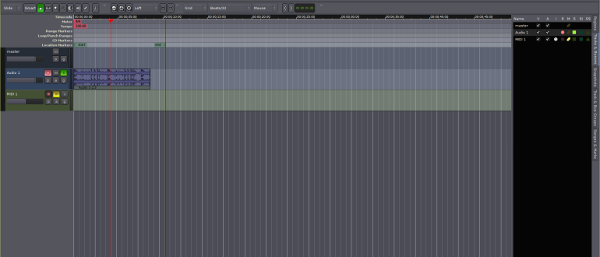
In this tutorial, I’ll go through how to use your Android device to control Ardour through your network.
Hi!
There’s a great Android application called Ardroid, which is intended to allow your Android device to work as a remote control for Ardour. Ardroid does this by sending OSC messages from your Android device, to you computer running Ardour. Ardour then lets your Android device control it through those messages.
What’s great about this is that a lot of us using Ardour also has some form of Android device, whether this is a phone, or a tablet. Why not use them together? It’s super-simple!
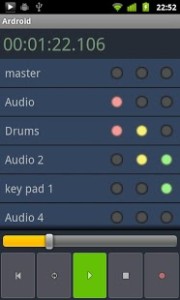
One of the screenshots of Ardroid from Google Play Store.
Anyway, Ardroid was written by Lincoln Spiteri, and even though it hasn’t been updated for quite a few years, it is still very much functional. Some of the things Ardroid allows you to do through your Android device is:
- Start, stop, play loop, and go back in playback. Allows you to control the transport, which is great. Also has the playheads position on the timeline available as a slider, which also can come in handy.
- Arm individual tracks (and transport) for recording. This opens up the possibility of not having to leave your recording booth to reset record the recording position. Man do I like that!
- Solo and mute individual tracks. Forgot to mute that guitar track? No need to swear, scream, and run back to your computer, just mute it through Ardroid!
I personally love it, because I quite often record something where I’m not sitting by the computer. Ardroid simplifies this process a lot, and perhaps most importantly, it saves my computer from my wrath when running back and forth. I will now go through how to set it up. But before, I want to say: Props to edogawa on IRC for explaining how to actually set this up so it works. Now, lets go.
Step 1: Prepare your Ardour computer
In order for Ardroid to be able to communicate with Ardour through OSC, you need to make sure that those OSC messages can actually reach the computer you run Ardour on. This means you need to do two things:
- Make sure your computer accepts TCP and UDP messages on port 3819. This means setting up your computer’s firewall to allow communication on that port to pass through. If you don’t quite get how to do this, check instructions for your specific firewall. This should be fairly straight forward.
- Find out what IP your computer has. In case you don’t know how to do that, just open a terminal and write
ifconfig , and then look for the appropriate device. I’m using a cable to connect to my router, so my IP is found under eth0. The device is usually called wlan0 if you use Wifi. If you want to be extra fancy, doifconfig | grep "inet addr" in a terminal, and look for the address starting with 192.168.. I can’t believe I wrote a full paragraph about finding your IP… I gotta stop….
After this is done, you also need to make sure that Ardour is properly setup to accept OSC messages. To do this, go to
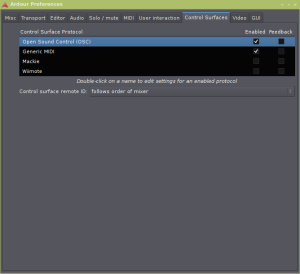
Enable OSC here, in the Preferences of Ardour.
Step 2: Get Ardroid, and configure it
Ardroid is available through Google’s Play Store. Otherwise, just navigate to the Play Store, and search for Ardroid. Simple enough.
Edit: Ardroid seems to no longer be available through Google's Play Store. You can however still find it by installing the F-Droid repositories. You can then install Ardroid from there.

Ardroid in Google Play Store.
Next, open up Ardroid, and go to Configure. Type the IP address of your computer that has Ardour running, and press OK.
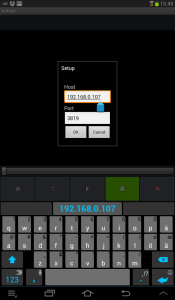
Input the IP of the computer you want to use Ardroid with.
Now, I didn’t need to also press connect, but maybe you do. If it doesn’t work automagically now, try pressing Connect in the Ardroid menu.
Step 3: PROFIT
And that should be it! You should now have Ardroid and Ardour working together, in beautiful harmony.
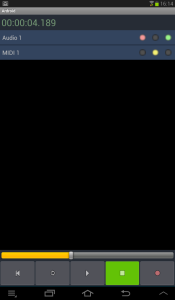
Ardroid in action. At the same position as the screenshot of Ardour here.
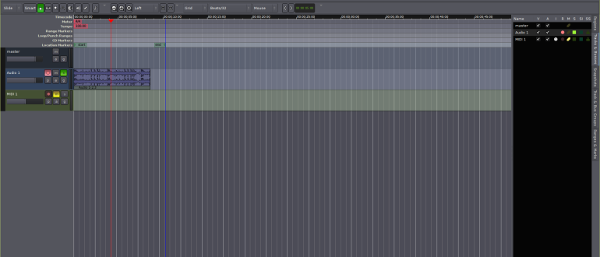
The same position in the track as in the Ardroid screenshot, but from Ardour.
Final notes
…and this was it! Super-simple, right?
Thanks for reading the tutorial! I hope this was of some value for you. Please let me know through the comments if there’s anything you wonder. Til next time!
Written by Gabriel Nordeborn
